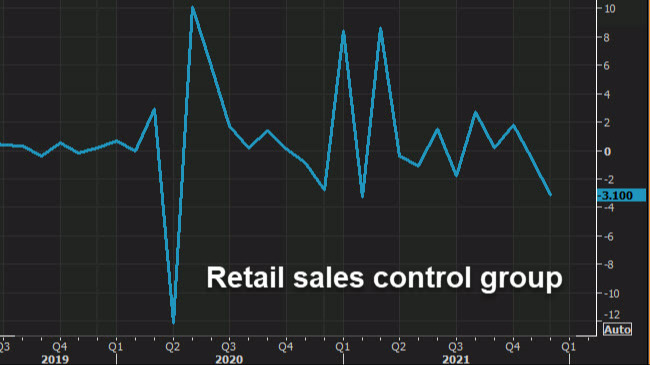
- Prior was +0.3% (revised to +0.2%)
- Ex-autos -2.3% vs +0.2% expected
- Prior ex-autos +0.3% (revised to +0.1%)
- Control group -3.1% vs +0.1% expected
- Prior control group -0.1% (revised to -0.5%)
There was some considerable hand-wringing about a soft reading in retail sales due to credit card spending data and that proved to be the case. The numbers were even worse than speculated with the largest fall in the control group -- which excludes oil, gas and building materials -- since Feb 2021.
I've been writing for years how December retail sales tend to miss because of the secular trend towards earlier holiday shopping and that was especially true this year because of worries about shipping. Later, the lack of spending was compounded by omicron.
Highlights:
- Furniture and home furnishings -5.5%
- Electronics and appliances -2.9%
- Clothing -3.1%
- Non-store retailers (online) -8.7%
- Food service and drinking -0.8%
Some of this hints at an overall normalization in spending. An under-reported story is just how strong retail spending has been, particularly on goods. If you look at the year-over-year numbers compared to last December, it's illustrative:
- Furniture and home furnishings +11.1%
- Electronics and appliances +14.6%
- Clothing +29.5%
- Non-store retailers (online) +10.7%
- Food service and drinking +41.3%
- Overall retail sales y/y +16.9%
So while this report badly missed expectations, it was still a much better holiday spending season than a year ago.It's similar -- if not stronger -- if we aggregate Oct-Dec with virtually all categories up double digits.
Some of that helps to explain why the market has taken this in stride. I also strongly suspect that traders were positioned for a negative miss, given the credit card data.



